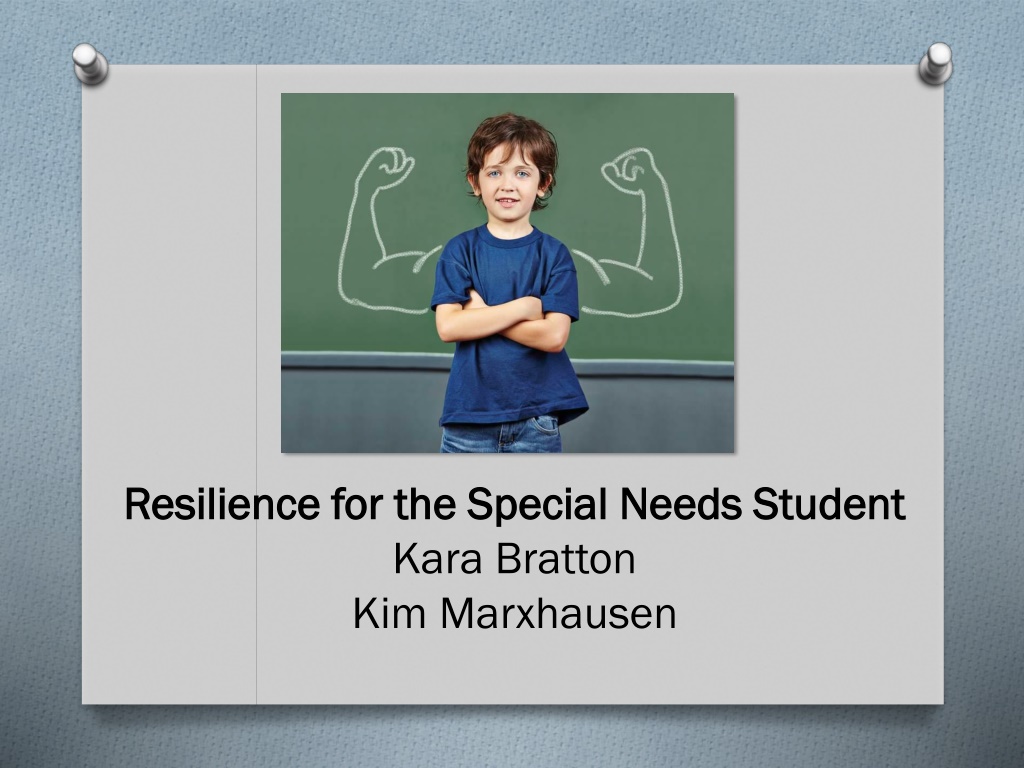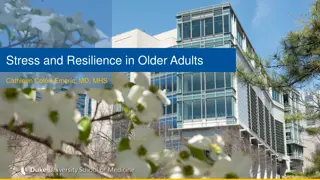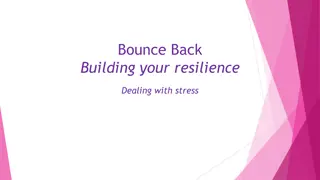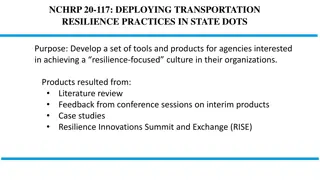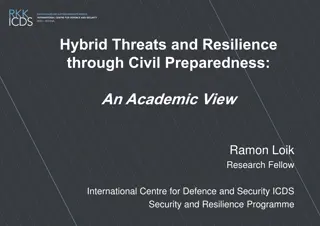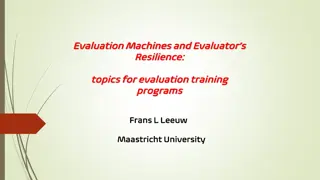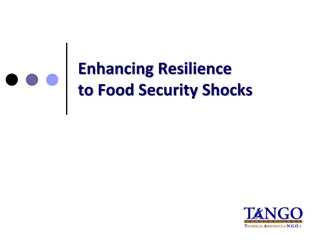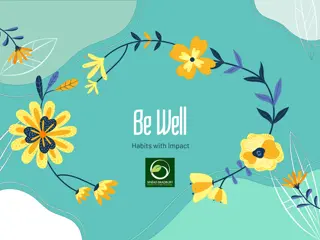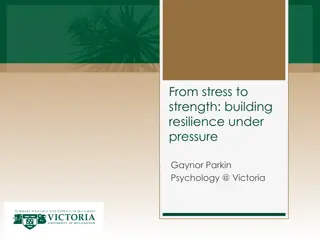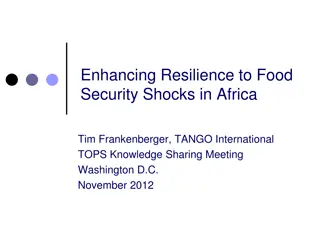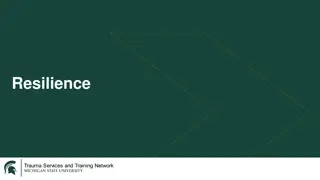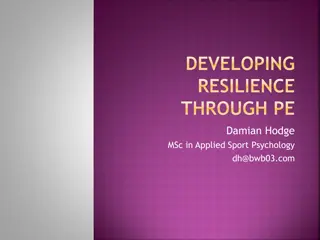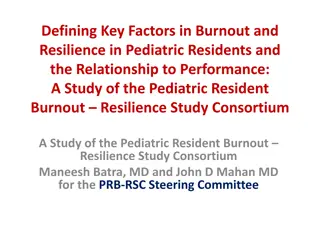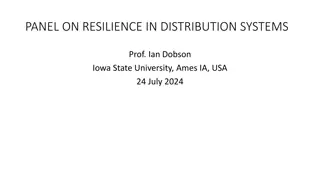Strategies for Building Resilience in Special Needs Students
Explore strategies to enhance cognitive and socioemotional resilience in special needs students, addressing risk factors and strengths in learning disabilities. Discover methods for nurturing oral language skills, vocabulary development, goal-setting, and monitoring behavior. Learn about fostering self-esteem, reducing anxiety and depression, and promoting adaptive responses through parent relationships and peer mentoring.
Download Presentation

Please find below an Image/Link to download the presentation.
The content on the website is provided AS IS for your information and personal use only. It may not be sold, licensed, or shared on other websites without obtaining consent from the author. Download presentation by click this link. If you encounter any issues during the download, it is possible that the publisher has removed the file from their server.
E N D
Presentation Transcript
Resilience for the Special Needs Student Resilience for the Special Needs Student Kara Bratton Kim Marxhausen
PowerPoint for LEA https://luthsped.org/2019/10/08/lea-presentations/
Goals Build resilience: Student strengths/weaknesses Teaching techniques Using the learning community Kara Kim Contributing factors Resilience pedagogy
Cognitive Resilience Risk factors for learning disabilities include family history, deficiencies in rapid naming, letter-sound knowledge and phonological awareness Not all students with risk factors develop problems with reading Possible strengths in oral language, executive functioning, and vocabulary skills
Cognitive Resilience Nurture oral language skills Build vocabulary skills Assist with setting goals and monitoring behavior, building executive functioning skills
Forward Planning Easy steps Harder steps Goal
Reverse Planning Goal Small steps Predict
Socioemotional Resilience Learning disabilities and attention deficit disorder are risk factors for low self- esteem, anxiety, and depression ORepeated failure, peer rejection, insecurity
Socioemotional Resilience - Strategies Students need to feel in control of their life and academics O Parent relationships Mothers shown to protect against internalizing difficulties in their children Fathers encourage coping mechanisms O Peer mentoring Pairing students with disabilities with older students with similar disabilities shown to increase adaptive responses
What is one of top five teacher behaviors that facilitates student success?
Teacher Feedback Positive : Negative Positive : Negative Feedback Feedback Elementary 3.5 : 1 Middle School 2 : 1 High School .66 : 1
Teacher Feedback % of Classroom % of Classroom Observations with Observations with ZERO Positive ZERO Positive Feedback Observed Feedback Observed 35% Elementary Middle School 58% High School 71%
Teacher Feedback O Immediate, positive feedback O Make praise specific, at least 3:1 positive : negative ratio, goal is 5 :1 O Public vs. private feedback O Most effective type of feedback O Should provide cues and reinforcement to learners O Video and audio feedback O Related to student goals O Least effective type of feedback O Punishment O Extrinsic rewards (does not contain specific information for student)
Cultivating Resilience OWork in small frequent interactions The brain takes statistics to see what is important to learn Frequency and interaction are messages to the brain Shapes the development of the brain at the level of neural pathways
Reframing Reframe Empathy Empathy Reframe Step One Step One Identify and differentiate the emotion Step Two Step Two Adapt the mindset
Reframing Reframe Empathy Empathy Reframe Reframing goals Reframing goals Find the future joy Find the learning Find the positive action Find the reassuring truth
Reframing Empathy Empathy It is overwhelming when a project looks too big. Reframe Reframe Won t you feel good when you have done a good job? [Find the future joy]
Reframing Empathy Empathy It is frustrating to have your paper corrected and to see so many wrong answers. Reframe Reframe Now we know what to work on to help you get better. [Find the learning]
Reframing Empathy Empathy It is discouraging when you can t learn something quickly. Reframe Reframe What can you do about that? [Find the positive action]
Reframing Empathy Empathy It makes you sad and mad when someone is mean to you. Reframe Reframe God loves us, no matter what. [Find the reassuring truth]
Protective Factors Common factors found among those with disabilities Goal setting Support systems Perseverance Self-awareness/understanding strengths and weaknesses
Value the Struggle Emphasize process development over product success Teach that struggle is a part of learning Help students make friends with failure by reframing a mistake as a learning opportunity Help students to see the progress they are making
Skill Skill Praising Praising Effort Effort Overcome obstacle You beat the problem! Self-regulate You refocused! Practice Your hard work paid off! Reframing You learned from a mistake! Carol S. Dweck Growth Mindset
Time Spent Teaching ONot teaching = teacher not engaging students, involved in doing something independently with no student interaction OHow much time do you think is spent not teaching for each grade level?
Time Spent Teaching Time Spent Time Spent Not Not Teaching: Teaching: Elementary Per Per Hour Hour Per Day Per Day Per Per Month Month Per Year Per Year 6 min 30 min 2 days 18 days Middle School High School 6 min 30 min 2 days 18 days 16.8 min 1.4 hours 5.6 days 2.4 months
Opportunities to Respond (OTR) O Teacher provided opportunities to respond lead to high active engagement and increased achievement O What percentage of time do you think has been observed with ZERO opportunities to respond for each level?
Opportunities to Respond (OTR) % of observations in which % of observations in which ZERO OTR instances were ZERO OTR instances were observed observed Elementary 12% Middle School 12% High School 21%
Opportunities to Respond (OTR) OGOAL: 3-5 opportunities to respond/minute OHow could you increase the number of OTRs in your classroom?
Peer Teaching Information retrieval Social capital Provide re-teaching at the point of learning Know Help No Know Help No
Peer Teaching Kagan strategies: Kagan strategies: Rally Coach Rally Coach Partners take turns, one solving a problem while the other coaches. Then they switch roles Quiz Quiz- -Quiz Trade Quiz Trade Each student prepares a question card. Students find a partner and quiz each other, then move on to a new partner.
Peer Teaching Oracy Oracy Target discussions Target discussions -- -- Extending a discussion by ranking 1 2 3
